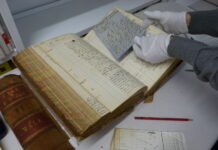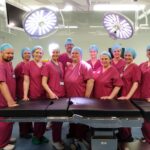Did you know that the earliest documented case of mouth-to-mouth resuscitation took place in Alloa, nearly 300 years ago?
On 3 December 1732, a local man named James Blair became the first recorded person to be revived using this life-saving technique, following a coal mine accident. The incident was documented by surgeon William Trossach and published in 1744 in the Edinburgh Society’s Medical Essays and Observations.
Blair had descended into a coal mine shortly after a fire and was overcome by fumes. After lying unconscious at the bottom of a ladder for up to 45 minutes, he was brought to the surface without a pulse or signs of breathing.
Dr Trossach immediately performed mouth-to-mouth resuscitation and, after several breaths, detected a faint pulse. He persisted until Blair began breathing on his own. Although still unconscious and unresponsive, further treatments followed. This included body massage, bleeding (a common 18th-century practice), and sal volatile – a pungent smelling salt.
An hour later, Blair’s eyes began to move, and eventually he regained consciousness. Remarkably, within a week, he was back at work with the only lasting complaint being a sore back from the rescue!
This remarkable piece of local medical history is not only a fascinating story but also a reminder of the long legacy of innovation in healthcare through the ages.
From 18th-century coal mines to 21st-century hospital wards, the spirit of lifesaving action lives on.







